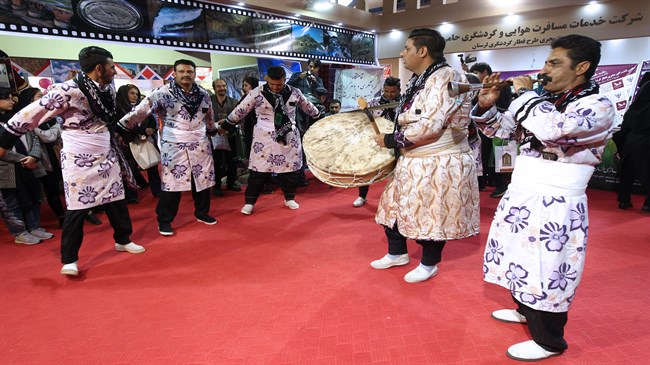
Organized by Iran's Cultural Heritage, Handicrafts and Tourism Organization (ICHHTO), the four-day event is hosting 660 domestic and 57 companies from 12 countries.
Deputy Director of ICHHITO in Ilam Province Judi Kalantari told Iran Daily that Ilam is a virgin tourist attraction which has high potentials in terms of eco-tourism and mineral water fountains.
The western province enjoys several mineral fountains which have been registered on the National Heritage List.
In view of its location in the Zagros mountain range, Ilam has picturesque views, natural lakes and spectacular mountains, she said.
Touching upon the number of tourists visiting the province, she said that it hosted two million pilgrimage tourists since it was en route to holy sites in Iraq.
'In the last Iranian calendar year (ended on March 20, 2018), it hosted more than three million people of whom 500,000 were lodged in residential locations,' she added.
The director of ICHHTO for tourism development in Chaharmahal-Bakhtiari Province Mohammadreza Abbasi said the province boasts rivers, valleys, waterfalls and scenic views which led the provincial officials to provide tourism facilities such as rafting, bungee jumping and zip-line, Iran Daily wrote.
Speaking about protected areas in the province, Abbasi said Tang-e-Sayad and Sabz-Kooh protected areas include oak forests and rivers for whitewater rafting.
Fritillaria plain, Zard kooh, Sheikh Alikhan waterfall in Koohrang are among the particular tourist attractions in the province, he added.
Monuments including Zamankhan Bridge in Saman Village and Duplan Bridge have the ability also attract several tourists, he said.
Some of the roads in the province are more than 300 years old. The most important road which was considered as the main route for nomads' immigration is Dez-Part which connects the central plateau of Iran to Iran's ancient capital of Pars.
South Khorasan tourism official Ali Kazemi said that the province is located along a road called 'Asian Road' connecting the holy city of Mashhad to the northern province of Mazandaran and can draw so many tourists.
Each year 15 million people visit Khorasan Province or will traverse through it to reach other destinations, he said.
Turning to the various ethnicities living in Khorasan, he said that Fars, Kurd, Torkaman, Baluch and Arab are among the ethnic groups in the province and due to this it enjoys a diversity in music, handicrafts and local cuisines.
More than 45 types of handicrafts are made in the province which are mainly based on loom, he said, pointing to Kurdish tablecloth, Gilim, Jajim, cushion and Torkaman rugs.
9060**1420
Follow us on Twitter @IrnaEnglish
 solhkhabar | Peace International News Agency Peace International News Agency , Peace News , International Agency News of Peace
solhkhabar | Peace International News Agency Peace International News Agency , Peace News , International Agency News of Peace